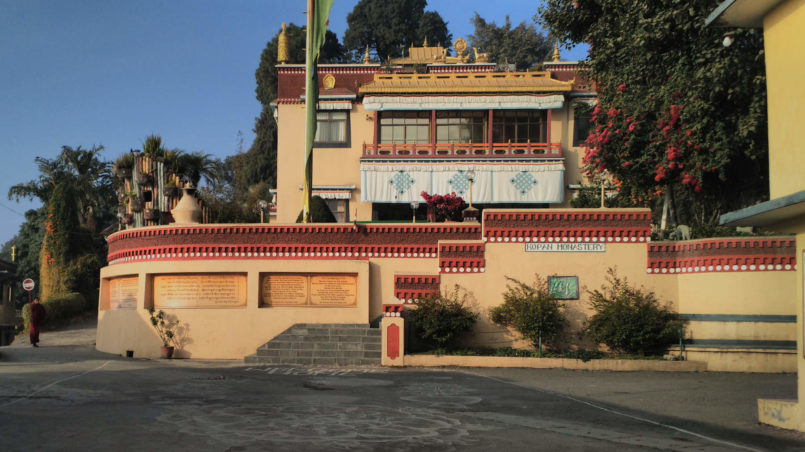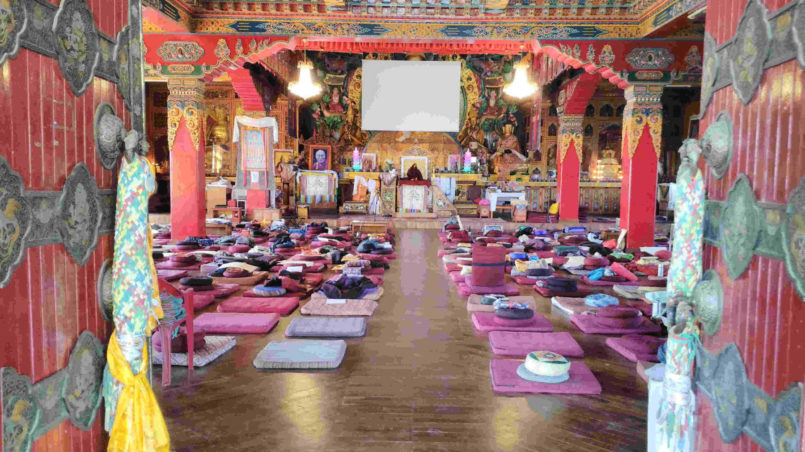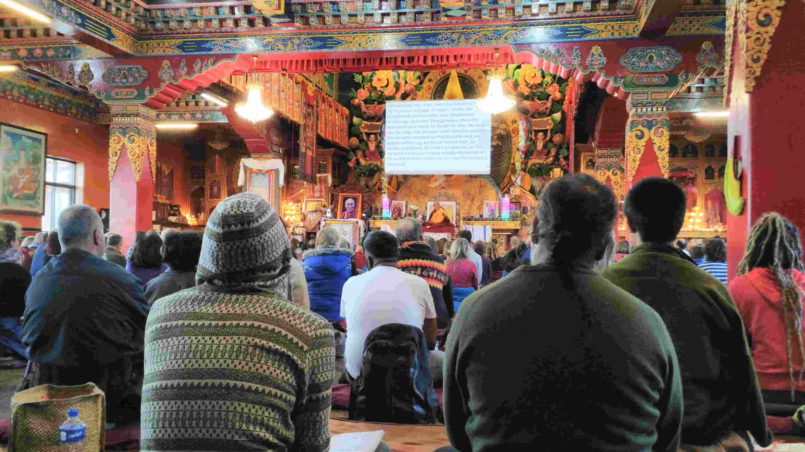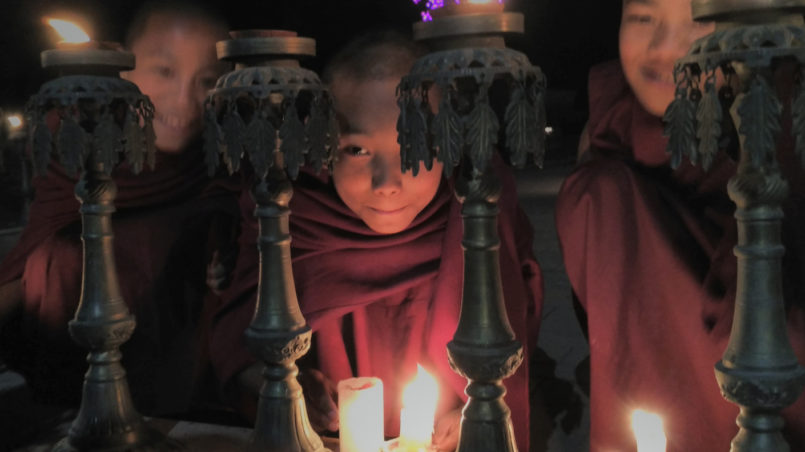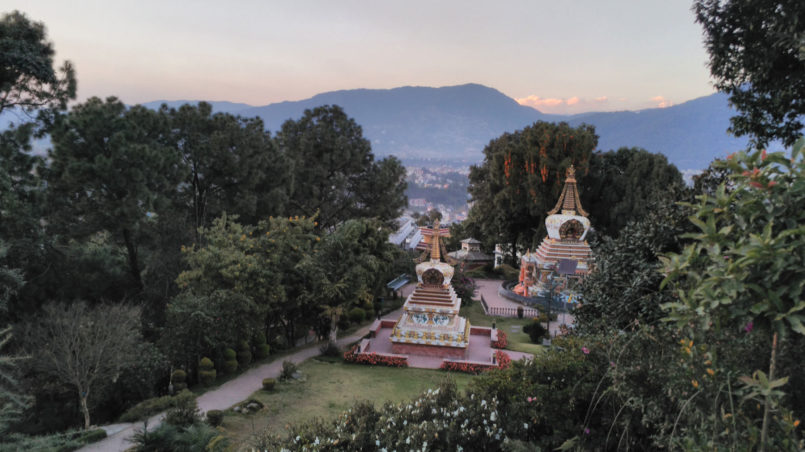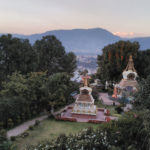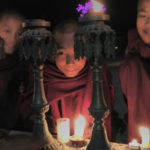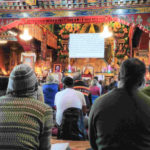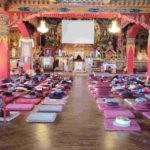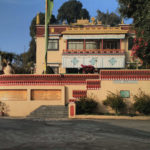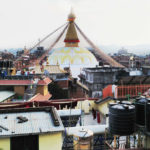The “November Course” at Kopan Monastery is completely different
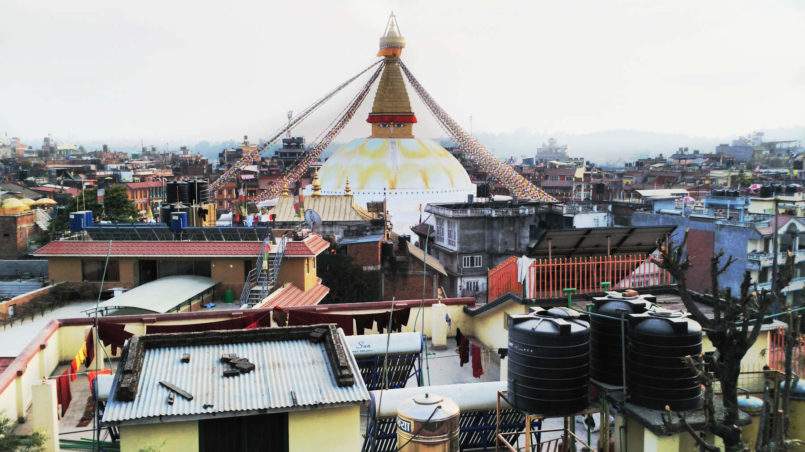
I sit in a café on the outskirts of Nepal’s capital Kathmandu and overlook a lively stupa, an important Buddhist sanctuary. I watch the many locals mixed with some Westerners circling the stupas. For 30 days I had no internet and now I am trying to get used to the “normal world” again.
I have just come from a Buddhist monastery, where I attended the so-called “November Course“. For two years I had the desire to participate in this course in the Kopan Monastery here in Kathmandu. One month dedicated entirely to the study of Buddhist teachings and meditation. A course in which one’s previous systems of thought and judgments about the world are deconstructed and then reassembled again.
And now I sit here, drink my coffee and look back on the past month in the monastery. I will share my experience in various articles with you and give a general overview of the November Course.
The legendary November Course took place for the 46th time this year. It was originally established in the 1970s when some travelling hippies came here to Nepal to learn more about Buddhism and meditation. The two Buddhist monks, Lama Yeshe and Lama Zopa Rinpoche, took the seeking Westerners under their care and initiated the one-month course. At that time, everything still took place under very simple circumstances: the participants slept in tents and the toilets were holes dug in the ground. The conditions were very harsh, but the chance to explore the truth of one’s own existence in the monastic environment was always worth these restraints.
In 2017 Kopan is still a modest, but well-equipped, lively monastery with hundreds of monks, from young to old. Once a year from November to December, hundreds of people from all over the world arrive and take up a lot of space. Even the Gompa, the great Buddhist meditation hall, is temporarily given up by the monks so that one can get an intensive insight into Buddhism and life in the monastery.
Half of the course is taught each year by a nun or a monk of western origin who has decades of experience in Buddhist practices. The second half of the course is taught by Lama Zopa Rinpoche, who founded the monastery and the course. It is a great honour and a privilege to witness the presence and teachings of such a knowledgeable and important, likable and authentic lama.
The November Course is not in itself a traditional meditation retreat in which one is withdrawn into the silence of a monastery and pure contemplation. Kopan is very busy. During the course, the principle of silence applies only in the evenings and mornings. With 250 participants, however, this is completely eliminated as quickly as possible.
Kopan seems more like a small, pulsating village. During the time of the course, I have interesting and in-depth conversations with people from all over the world. Some of them are completely new to Buddhism, while others have been practising for years and want to deepen their practice in Kopan.
During the 30-day course, there is a daily, fixed timetable. The day begins early at 5:30 a.m. with the bowing ritual (more on this will be in part 2 of my series), a tea break at 6 a.m. and the first concentration meditation from 6:30-7:30 a.m. Afterwards, there is breakfast, and at 9:30 a.m. the theoretical lessons begin, which are introduced by prayers. In these units, the topics of Buddhist teaching are discussed and the focus is on a certain topic every day. Between 11:30 and 2 p.m. there is a lunch break.
This is followed by a one-hour discussion round in which the topics discussed are examined in groups of approximately 10 participants each. From 3:30-5 p.m. another lesson is scheduled, followed by a tea break and an analytical meditation session from 6-7 p.m. Afterwards, there is dinner before the day ends with the last meditation from 8-9 p.m., with a focus on the recitation of Buddhist prayers and mantras.
In this simple everyday life without Internet – you drop off your mobile phone and laptop at the reception at the beginning of the course – you can try everything out for yourself and then decide which aspects you are interested in. Moreover, one is inevitably confronted with one’s own weaknesses, blockades, and personal resistance and is thus stimulated to reflect on them and to come to terms with their origin.
The daily meditations are guided analytically and consist of the topics discussed during the day in class. In Buddhism, one is often confronted with the human nature of suffering and the inevitability of death. One can benefit greatly from these topics because they automatically help you to be more thankful and respectful towards life. However, some people can quickly feel depressed and then have to keep a little distance before they can fully engage with the topics.
It is quite challenging to meditate every day on teachings that deal with the detachment from the ego and the reality of one’s own transience because, in analytical meditations, one is guided clearly and objectively through these themes and taken with a clear, honest view into one’s own soul life – with all its abysses and hidden corners.
It was not my first encounter with Buddhism: in the previous two years, I had already attended two 10-day introductory courses in a Buddhist center in northern India. So I came here to Nepal with certain expectations. Through these 30 days in Kopan, my view of Buddhism and how I would like to integrate it into my life was completely turned upside down. As I have already described in my article Aspects of Buddhism for a positive coexistence in the world, Buddhist philosophies help me a lot to lead a life that brings my body and mind in harmony.
Buddhism and meditation have shown me how to get out of confusion and into clarity. So far, so good. In Kopan, I was now confronted with a wider range of Buddhism. This includes not only meditation and philosophy, which many of us are so attracted to, as they can be easily integrated into everyday Western life but also prayers and ritual bows.
With the November Course, I wanted to record and try everything. Just letting myself in on the trip. And so I have not only given new insights and experiences, but also unexpected resistance and doubts a chance to be looked at by me. This is something that people are all too keen to avoid, but this is the only way to develop our optimal learning potential.
In my next article, you can read more about my personal resistance and daily challenges during my monastic life.
Translation German-English: Anna Dichen

